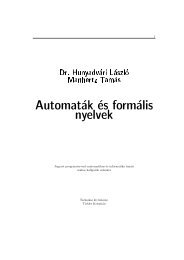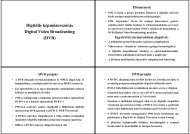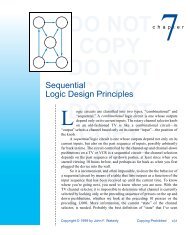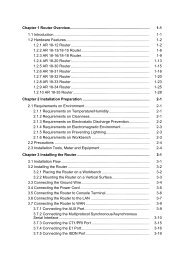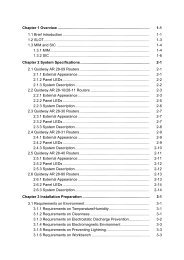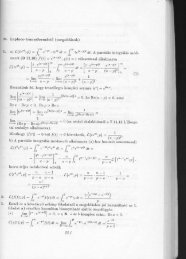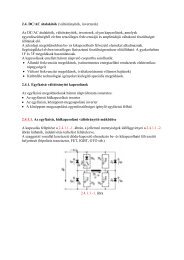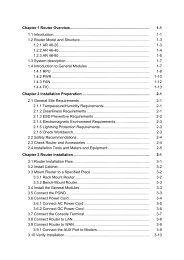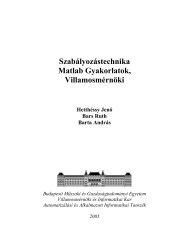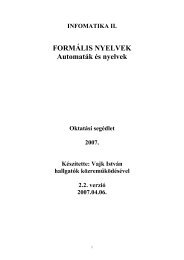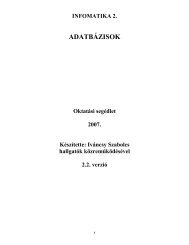chapter 8.pdf
chapter 8.pdf
chapter 8.pdf
You also want an ePaper? Increase the reach of your titles
YUMPU automatically turns print PDFs into web optimized ePapers that Google loves.
Section 8.4 Counters 603DO NOT COPYCLOCKQ0DOQ1NOT COPYQ2Q3DO NOT COPYCOUNT 3 4 5 6 7 8 9 10 11 12 3Figure 8-38 Timing waveforms for the ’163 used as an excess-3 decimal counter.excess-3 decimal code, shown in Table 2-9 on page 45. Figure 8-37 shows theconnectionsDOfor a ’163 to countNOTin the excess-3 sequence. A NANDCOPYgate detectsstate 1100 and forces 0011 to be loaded as the next state. Figure 8-38 shows theresulting timing waveforms. Notice that the Q3 output has a 50% duty cycle,which may be desirable for some applications.A binary counter with a modulus greater than 16 can be built by cascading74x163s.DOFigure 8-39 showsNOTthe general connections for suchCOPYa counter. TheCLK, CLR_L, and LD_L inputs of all the ’163s are connected in parallel, so thatall of them count or are cleared or loaded at the same time. A master countenable(CNTEN) signal is connected to the low-order ’163. The RCO4 output isasserted if and only if the low-order ’163 is in state 15 andDO NOTCNTEN is asserted;COPYRCO4 is connected to the enable inputs of the high-order ’163. Thus, both thecarry information and the master count-enable ripple from the output of oneFigure 8-39 General cascading connections for 74x163-based counters.DO NOT COPY74x16374x16322CLOCKCLKCLK11RESET_LCLRCLRDO9NOT COPY9LOAD_LLDLD77CNTENENPENP1010ENTENT314314D0A QAQ0 D4A QAQ4413413D1B QBQ1 D5B QBQ5DO5NOT12COPY512D2C QCQ2 D6C QCQ6611611D3D QD Q3 D7D QDQ715RCO415RCORCORCO8U1U2Copyright © 1999 by John F. WakerlyCopying Prohibited



